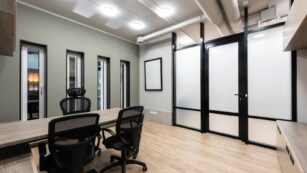In today’s fast-paced world, smart design is transforming how people interact with their online marketplaces. From homes to workplaces, integrating intelligent design solutions enhances functionality and user experience. With the rise of technology, design:ehwgchxttgq= smart emerges as a pivotal concept, seamlessly blending aesthetics with innovation.
Smart design isn’t just about adding tech features; it’s about creating spaces that adapt to users’ needs. This approach emphasizes sustainability, efficiency, and personalization, ensuring that every element serves a purpose. As people increasingly seek environments that respond to their lifestyles, the demand for smart design continues to grow.
As designers embrace this trend, they’re redefining the boundaries of creativity and practicality. By incorporating cutting-edge technology and thoughtful design principles, they’re crafting spaces that not only look good but also improve quality of life. The future of design lies in its ability to anticipate and evolve, making design:ehwgchxttgq= smart a game-changer in the industry.
Design:ehwgchxttgq= Smart
 Design:ehwgchxttgq= smart represents a paradigm shift integrating technology with aesthetics to create responsive environments. This approach leverages data-driven insights to refine functionality, making spaces more intuitive. In residential settings, smart design incorporates automated systems like thermostats and lighting, enhancing convenience and energy efficiency. Workplaces benefit from adaptive layouts and connected devices, fostering collaboration and productivity.
Design:ehwgchxttgq= smart represents a paradigm shift integrating technology with aesthetics to create responsive environments. This approach leverages data-driven insights to refine functionality, making spaces more intuitive. In residential settings, smart design incorporates automated systems like thermostats and lighting, enhancing convenience and energy efficiency. Workplaces benefit from adaptive layouts and connected devices, fostering collaboration and productivity.
Smart design prioritizes sustainability, using eco-friendly materials and energy-saving technologies. It adapts to user preferences, offering personalized environments that adjust to individual needs. Smart furniture, equipped with sensors, can transform spaces based on usage patterns. Seamless integration of technology within design ensures user simplicity without compromising aesthetic appeal.
As technology evolves, smart design continues expanding its reach. Designers meld creativity with innovation, exploring new materials and technologies to develop cutting-edge solutions. They are tasked with creating designs that not only solve practical problems but also anticipate future trends. In this dynamic landscape, smart design establishes itself as a crucial element in advancing industry standards.
Key Features of Design:ehwgchxttgq= Smart
Smart design represents a forward-thinking approach characterized by its adaptability and efficiency. It’s a seamless blend of aesthetics and function that transforms everyday spaces.
Innovative Design Elements
 Innovative elements in smart design combine technology with user-centered aesthetics. Smart lighting systems adjust illumination based on natural light levels. Dynamic décor, such as changeable wall panels, offers customizable environments. Integrated smart windows regulate indoor temperature, enhancing energy conservation.
Innovative elements in smart design combine technology with user-centered aesthetics. Smart lighting systems adjust illumination based on natural light levels. Dynamic décor, such as changeable wall panels, offers customizable environments. Integrated smart windows regulate indoor temperature, enhancing energy conservation.
Smart design focuses on intuitive user interfaces that enhance user experience. Voice-activated controls streamline interactions with devices. Applications provide real-time information for informed decision-making. Responsive touchscreens and seamless transitions promote ease of use, resulting in enriched user satisfaction.
Compatibility and Integration
Compatibility and integration enable smart design to function across various platforms. Cross-device synchronization creates unified systems where phones, tablets, and computers communicate effortlessly. Unified protocols standardize device interactions, eliminating compatibility issues. Such integration maximizes the efficiency of interconnected networks in smart environments.
Performance and Functionality
Speed and Efficiency
 Speed defines the core of effective smart design. Automated systems like smart thermostats and lighting exemplify efficient energy use by rapidly adjusting to users’ needs. Motion sensors in smart devices shorten response times, optimizing the interaction process. In workplaces, networked devices streamline workflows, enhancing productivity by reducing manual interventions.
Speed defines the core of effective smart design. Automated systems like smart thermostats and lighting exemplify efficient energy use by rapidly adjusting to users’ needs. Motion sensors in smart devices shorten response times, optimizing the interaction process. In workplaces, networked devices streamline workflows, enhancing productivity by reducing manual interventions.
Reliability ensures the continuous functionality of smart systems. Error detection algorithms in smart appliances detect operational failures before they cause disruptions. Stable connectivity in smart networks supports seamless device communication, essential in maintaining system integrity. Redundant technologies, like backup power supplies in smart homes, prevent downtime and assure uninterrupted service delivery.
Pros and Cons
 Smart design is transforming how spaces function and interact with their users. Its adaptability and efficiency offer significant advantages, including enhanced user experience and energy conservation. However, it’s essential to consider potential drawbacks such as the initial cost of implementation and the complexity of integrating new technologies with existing systems.
Smart design is transforming how spaces function and interact with their users. Its adaptability and efficiency offer significant advantages, including enhanced user experience and energy conservation. However, it’s essential to consider potential drawbacks such as the initial cost of implementation and the complexity of integrating new technologies with existing systems.
As smart design continues to evolve, it presents both opportunities and challenges for designers and users alike. Embracing this innovative approach requires a balance between creativity and practicality, ensuring that the benefits outweigh any limitations. Ultimately, smart design’s potential to revolutionize environments makes it an exciting frontier in the world of design.

